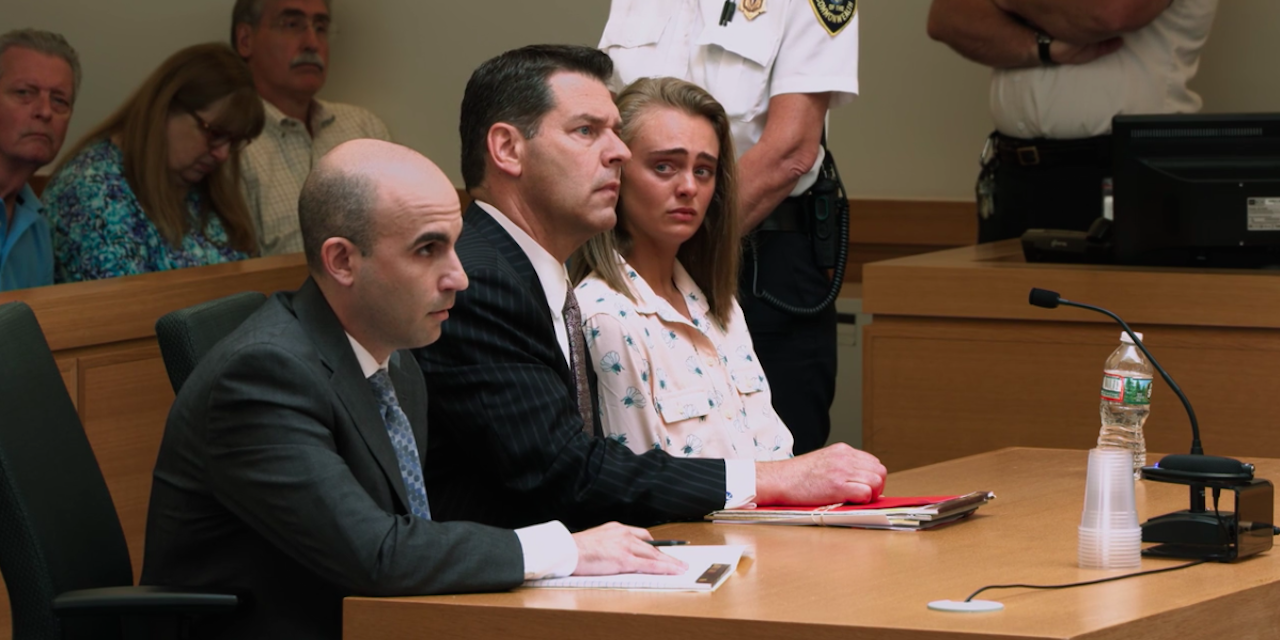

This is not reflective of us as a society and how we communicate with others. “I recognized that there was a very puritanical throwback to, ‘We should burn the witch. “Everybody was talking about the way that she looked, about how she dressed, about what her perceived actions were,” says Carr, who was present in court for the trial. Carr suggests the teenage defendant was absorbed into a cultural trope that casts young women as dangerous temptresses. Carter became a lightning rod and “her face…synonymous with a form of evil,” as the filmmaker puts it. And that’s what this whole case hinged on.”Īll of the attention on the case owed something to the defendant’s appearance-young, blond and attractive.

“She may or may not have told him to get back into the truck. “It was my assertion that she could have been lying about saying that, because she always wanted people to know how central she was to Conrad, and how central to him she was on the night of his death,” Carr maintains. If she had a tendency to prevaricate, who is to say she actually told Conrad Roy to return to his vehicle as it filled with noxious fumes? A psychiatrist argued in court that anti-depressant medication had left her “involuntarily intoxicated.” She was also something of a fabulist-spinning tales to draw attention to herself. And there is no such thing as absolute truth when it comes to these things.”Īmong the possible mitigating factors was Carter’s own history of mental illness. “And, ‘I hated her in Episode 1 and I understood her in Episode 2.’ It was really understanding that when you look at these cases all of this can shift your own perception. “I’m somebody that very closely monitors Twitter and I remember when the film came out in July there was this constant refrain of, ‘I thought I knew this case and I didn’t,’” Carr recalls. The documentary audience, in a sense, becomes a surrogate jury. And I think that if Michelle had come into physical contact with Conrad and they talked about this, I think it would’ve been a very different conversation.”Ĭarr constructs her film in two parts-the first part devoted to the prosecution, the second to the defense. “Seen in a darker way, it is really our own words have a way of undoing us…We are texting things and saying things to each other that I truly do not think that we would say out loud. “ really set up an incredibly intense debate about what you can text people,” Carr observes. “It was just constant encouragement to take his life,” a detective who investigated the case comments in the documentary, “almost demanding that he take his life.”Īfter Roy’s death, Carter texted a friend that the young man had gotten cold feet at one point and stepped outside the vehicle, but Carter said she told him by phone to “F***ing get back in.” Hang yourself, jump off a building, stab yourself idk there’s a lot of ways.”
I LOVE YOU NOW DIE HOW TO
On the day Roy planned to kill himself, for instance, Carter texted him, “Are you gonna do it now?…You have to do it like you said.” Sometime before the fateful day, Carter texted Roy with suggestions on how to dispatch himself: “Why don’t you just drink bleach.
I LOVE YOU NOW DIE TRIAL
Carter was put on trial for involuntary manslaughter after authorities gained access to Roy’s cell phone and found the texts. Michelle Carter, a two-part HBO documentary now in contention for Emmy consideration. I Love You, Now Die is available to watch on Sky Crime and NOW TV.Nat Geo Unveils Slate With 9/11 Doc Series, 'Explorer' Reboot & Bobby Bones Travelogue, Renews 'Gordon Ramsay: Unchartered' & Pushes 'Genius: Aretha' To Fall HBOĬarr explores that infamous case in I Love You, Now Die: The Commonwealth v. Victims of sexual assault don’t want to come forward in fear of not being believed.’ We live in a world where juries are reluctant to convict ordinary-looking men of rape and don’t believe victims when they come forward. ‘I think it perpetuates stereotypes which are harmful in the real world. ‘Gone are the days when true crime was the Pot Noodle of television, something you’d watch at 2am in the morning and it was bad guy doing something terrible to the ideal victim. ‘I think that’s’ what our audience wants,’ said Daynes. Michelle’s case is one of the foggiest for the ‘armchair detective’.Ĭonsultant Forensic Psychologist Kerry Daynes spoke to press including .uk at the launch of Sky Crime to explain the vitality of exploring these complex narratives, which have otherwise suffered from one-dimensional reporting. True crime is still evolving since The Case of Adnan Syed completely flipped perceptions of a guilty verdict.


 0 kommentar(er)
0 kommentar(er)
